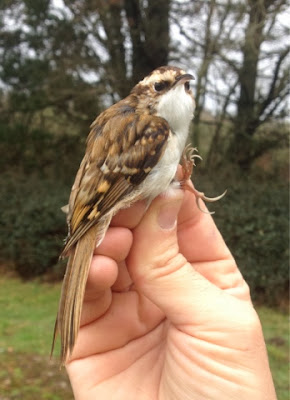Over summer 2013 at Hot Point, Lizard, we only caught one French-ringed Storm Petrel (compared to four in 2012), but we've just heard that we had a great run of records of birds going the other way. In total five birds ringed at Hot Point in 2013 were recaught on Banneg later in the year, with a further bird ringed in 2012 unfortunately found predated there. This compares with just one going that way in 2012.
But what was interesting was when these birds were caught, with some making very quick movements over the 178km to Banneg. Birds ringed in June were recaught 35 days, 32 days and four days later, whilst a bird ringed in July was recaught three days later and one ringed in August was recaught the next day! I'm sure birds regularly commute backwards and forwards across the English Channel, but in theory non-breeding birds are more attracted to tape lures, but I bet these movements are of breeding birds...
We also just received details of a few movements from last autumn, including a Sedge Warbler ringed at Marazion and recaught in France five days later (but it did weigh 11g when ringed so was obviously getting ready for the off), a Spanish-ringed Reed Warbler recaught at Gunwalloe was ringed on spring migration (the first to be found in Cornwall), and a Chiffchaff we caught in November had been ringed in North Yorkshire a month earlier. This bird had come over 500km and was presumably on migration through the country when ringed.
The map below shows where these birds were ringed/recaught: Storm Petrels (red), Sedge Warbler (green), Reed Warbler (blue) and Chiffchaff (yellow).

















